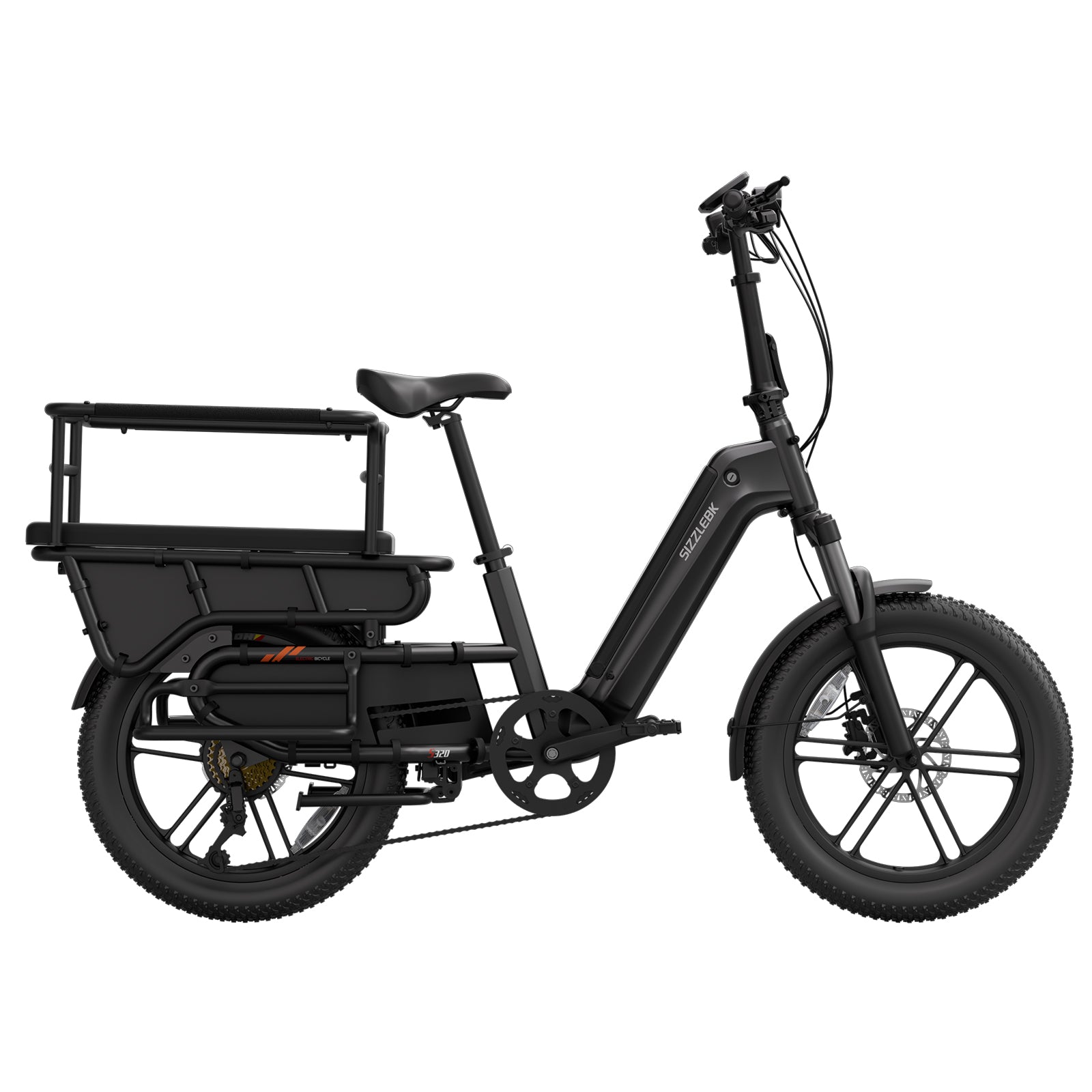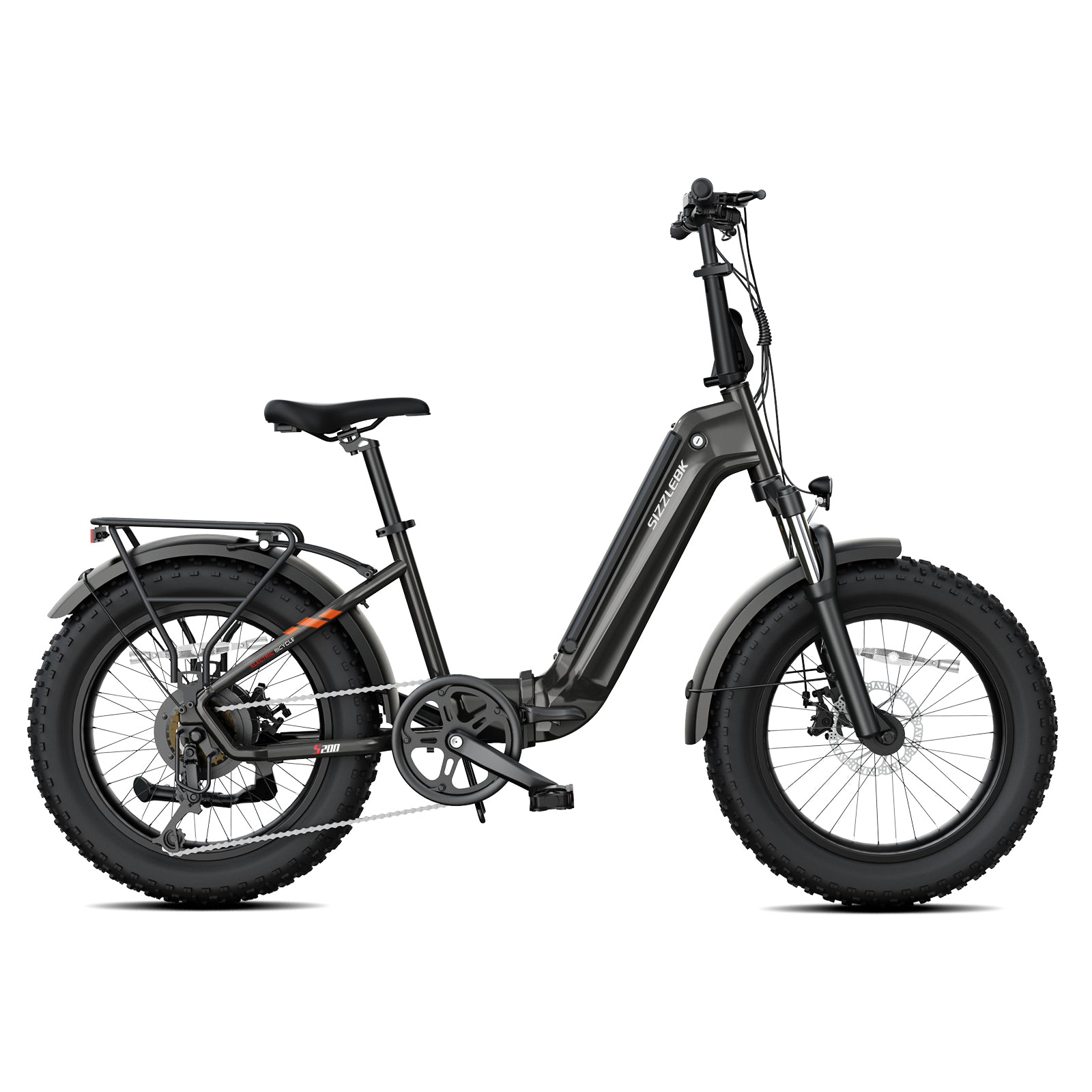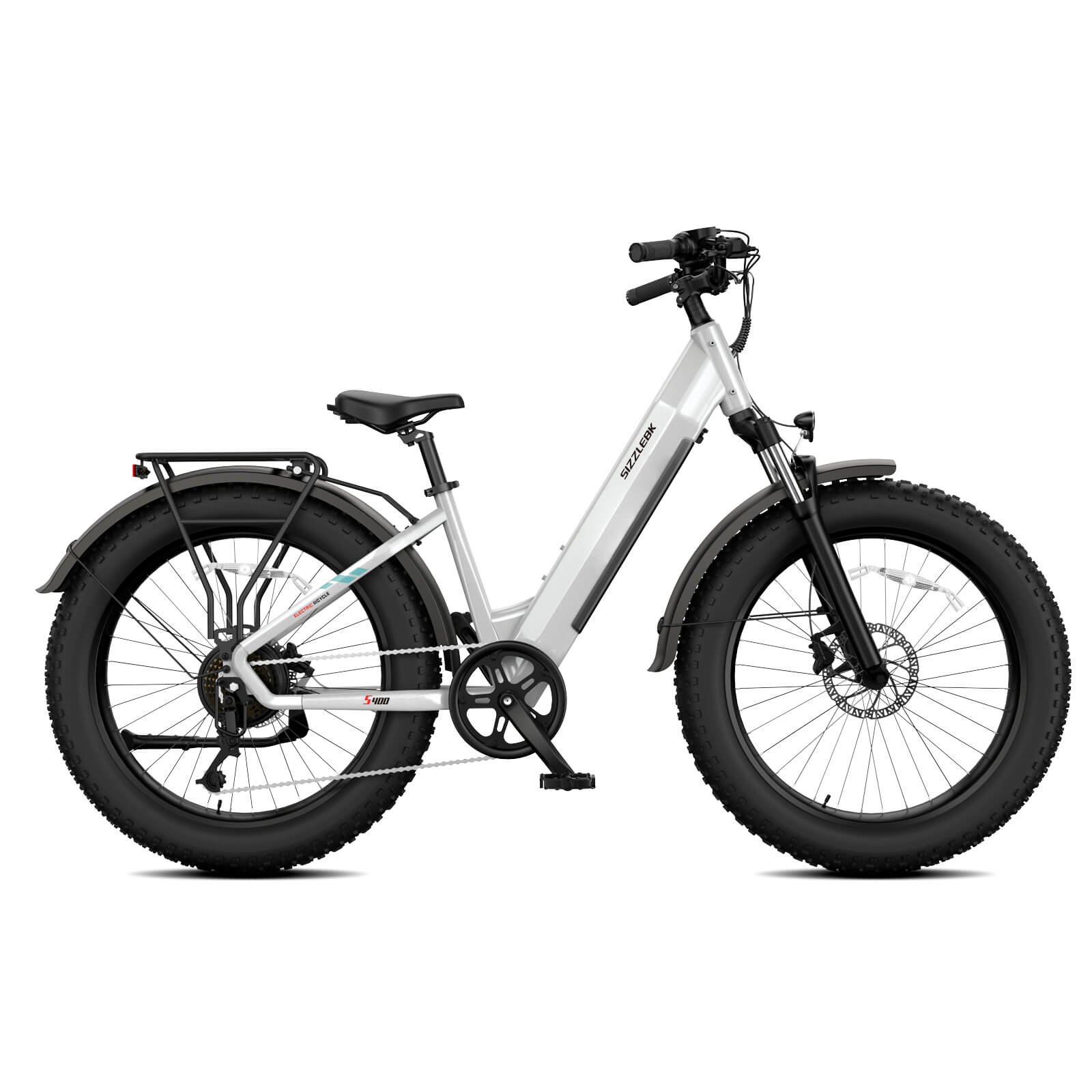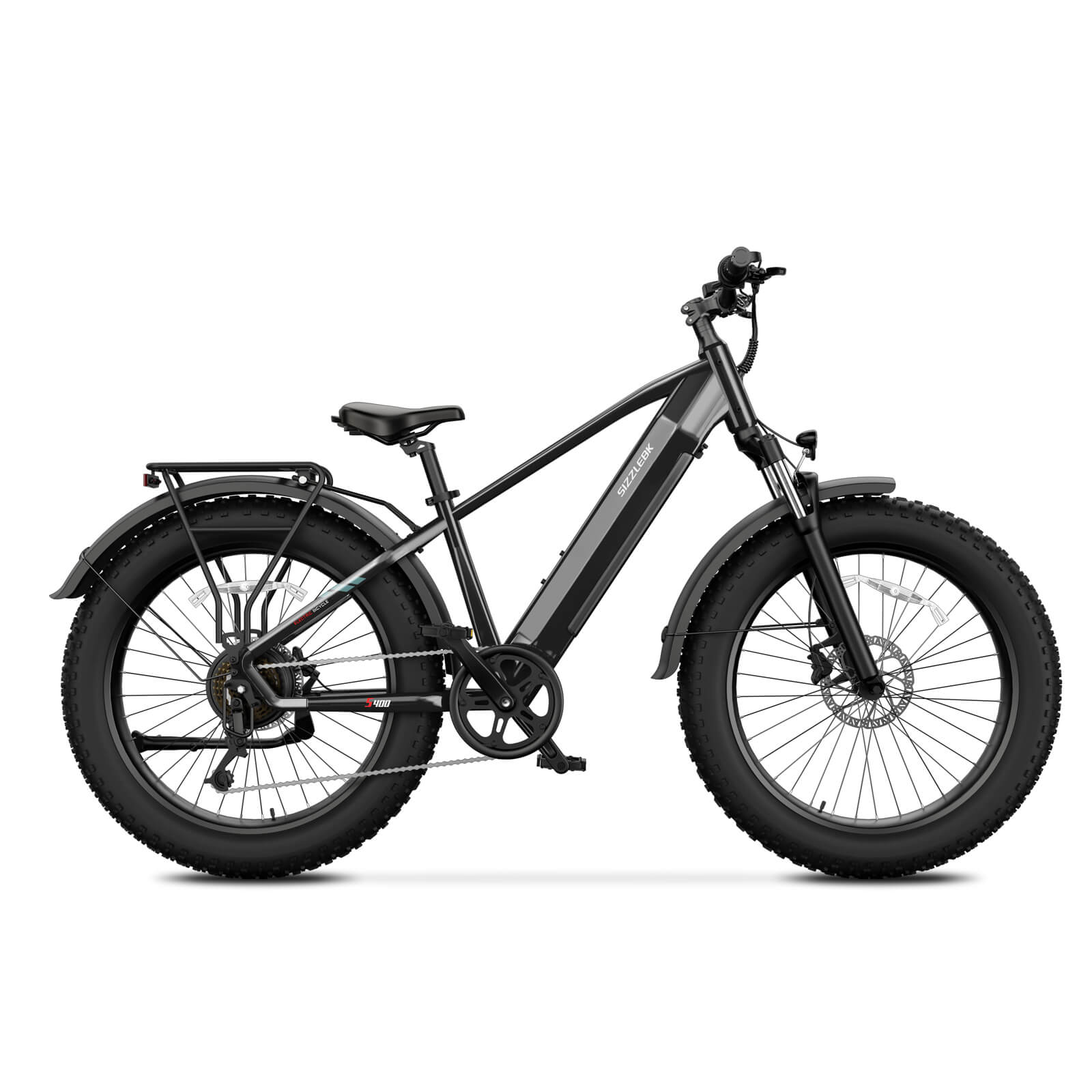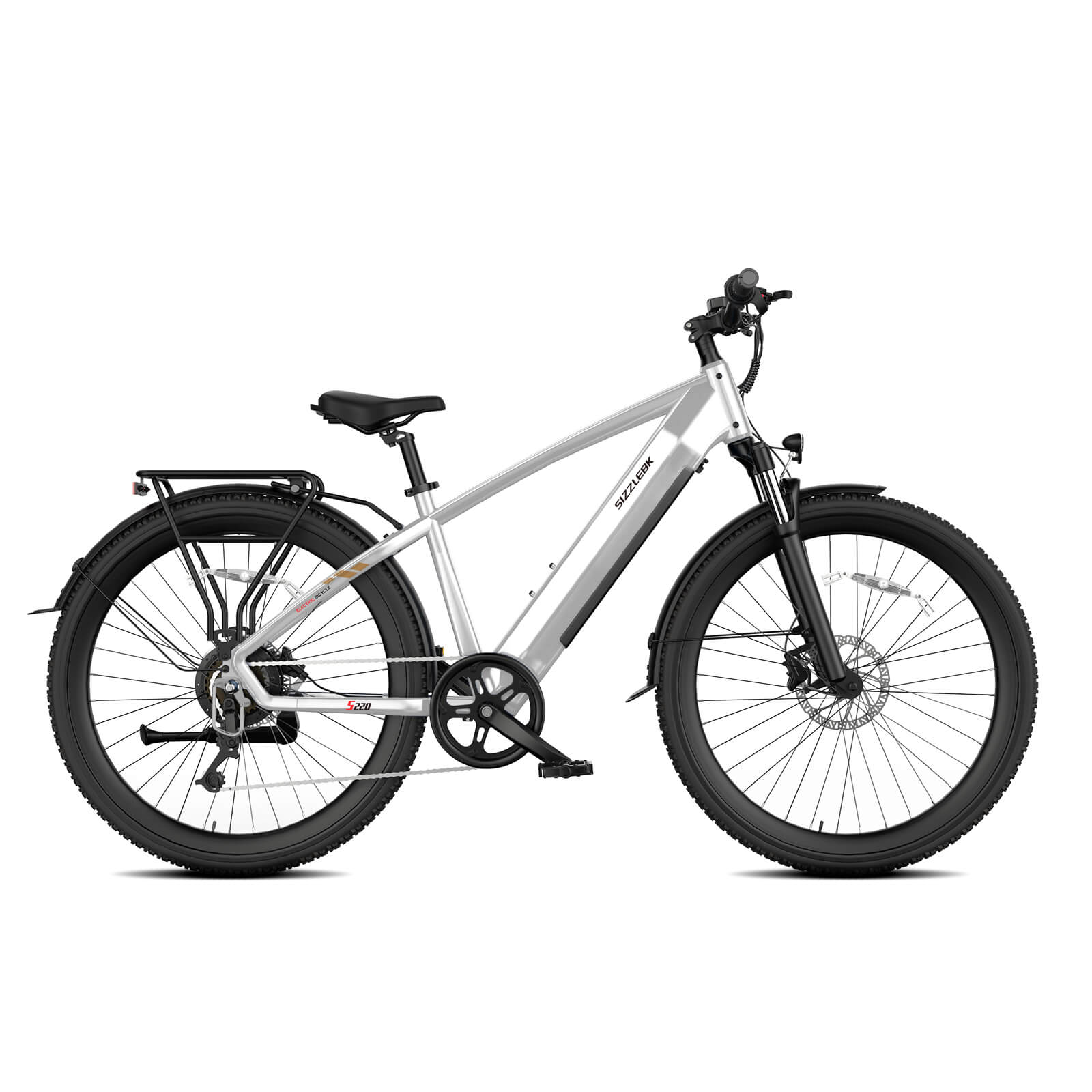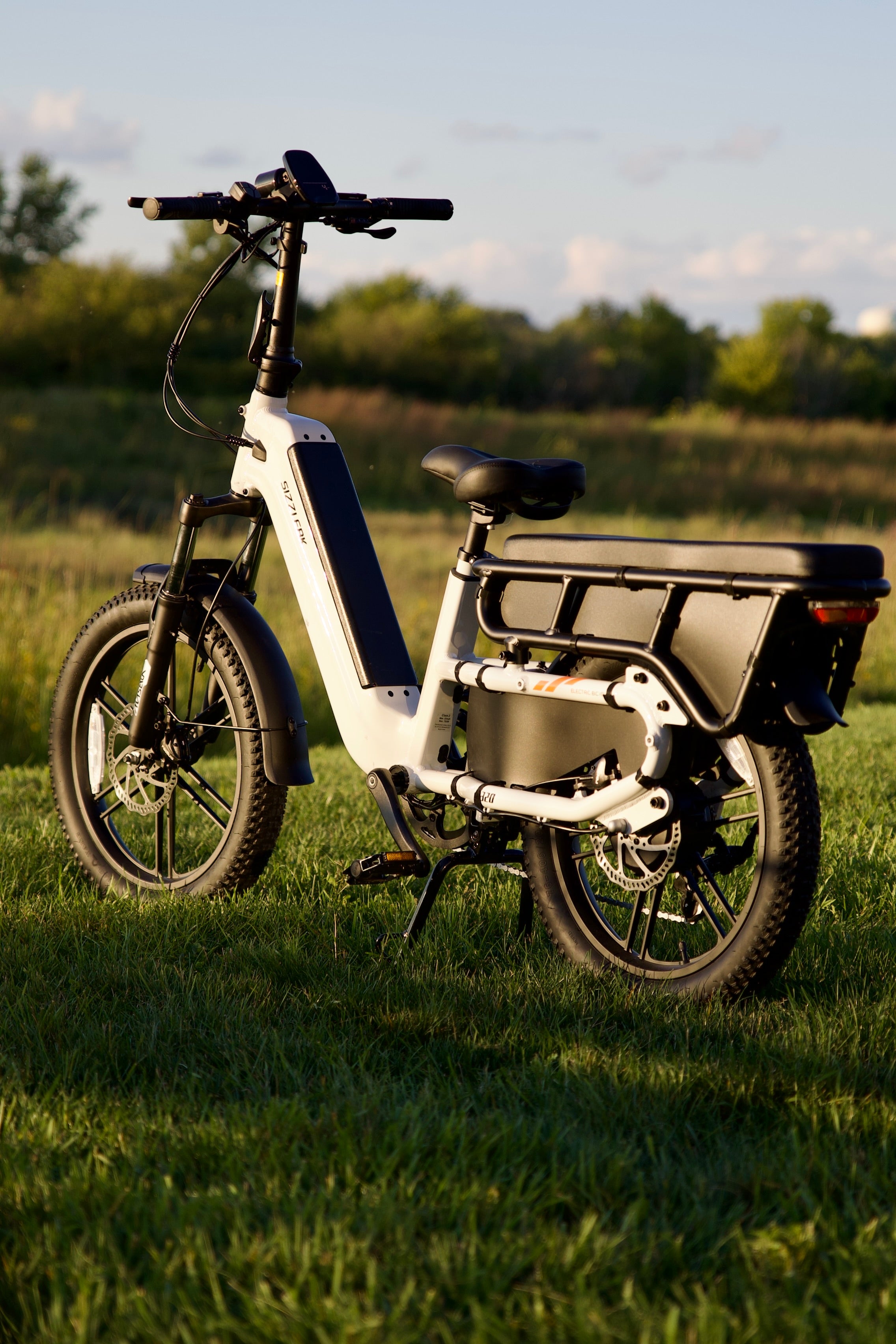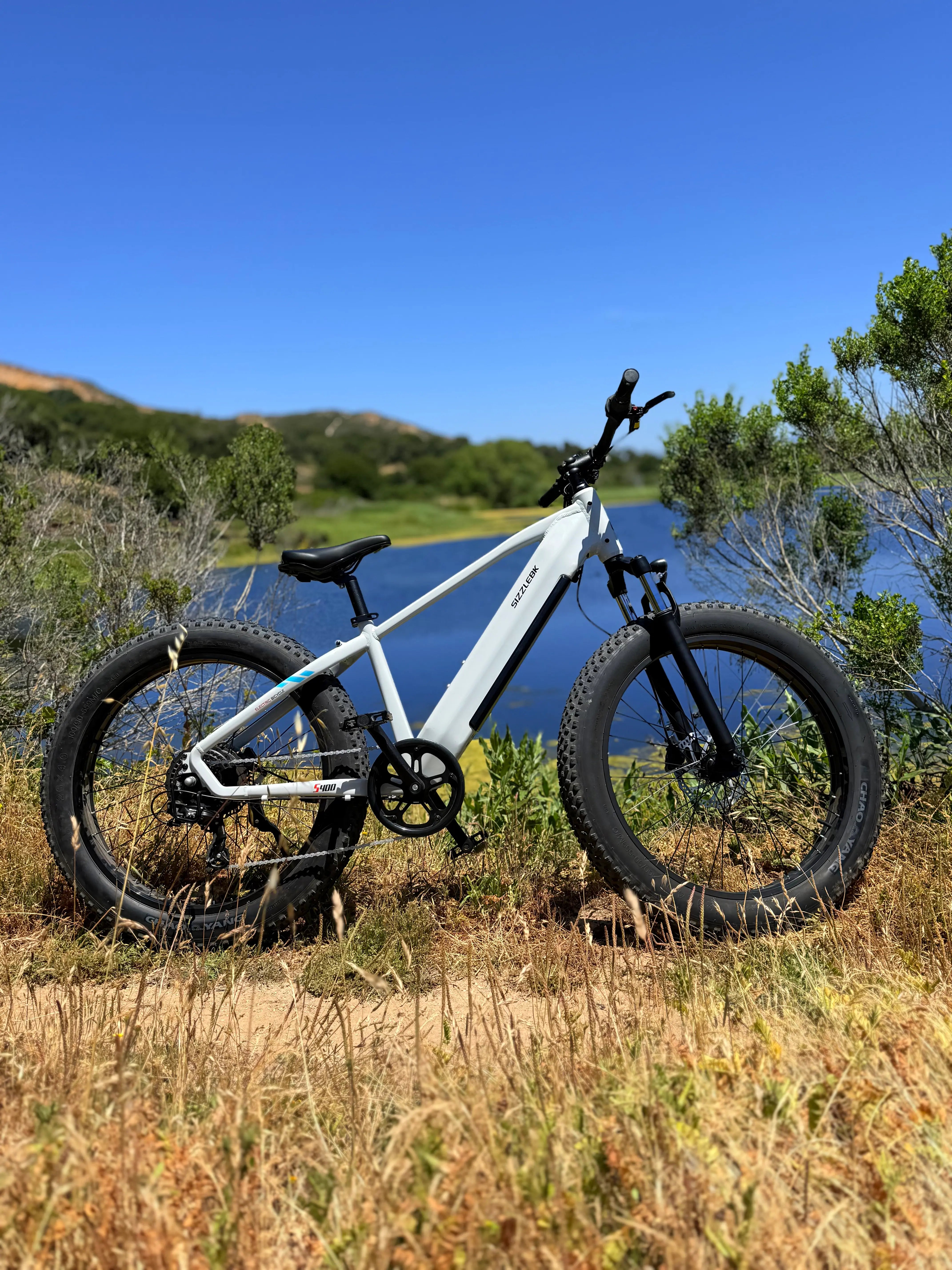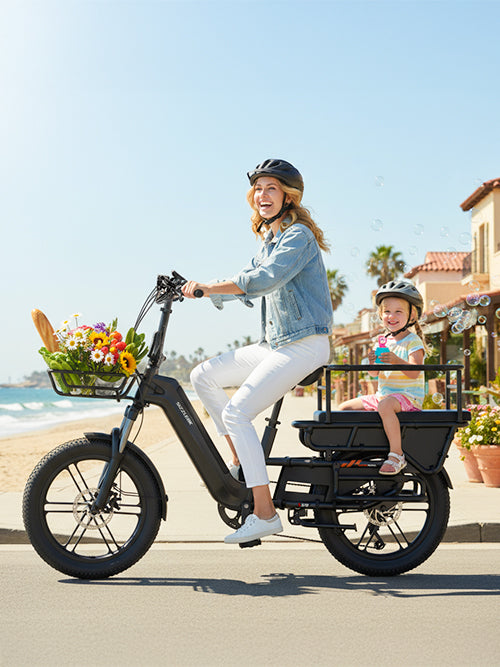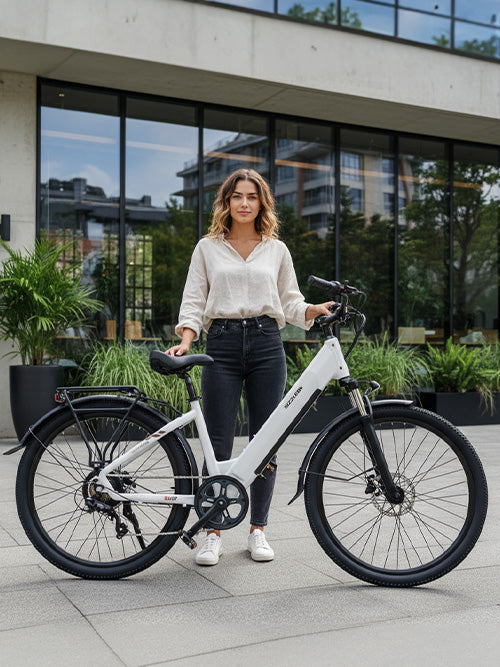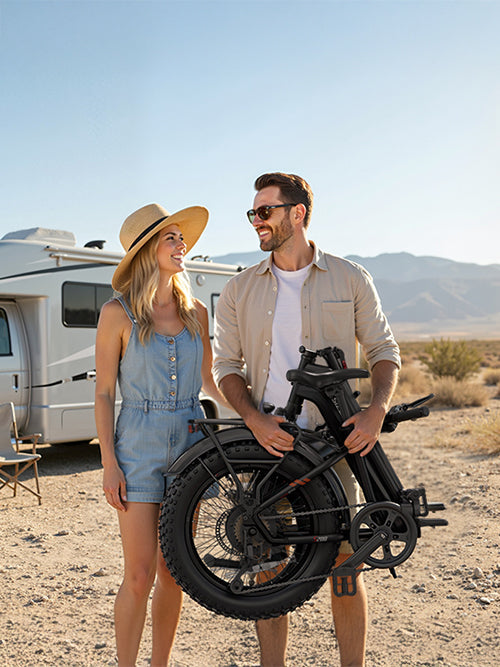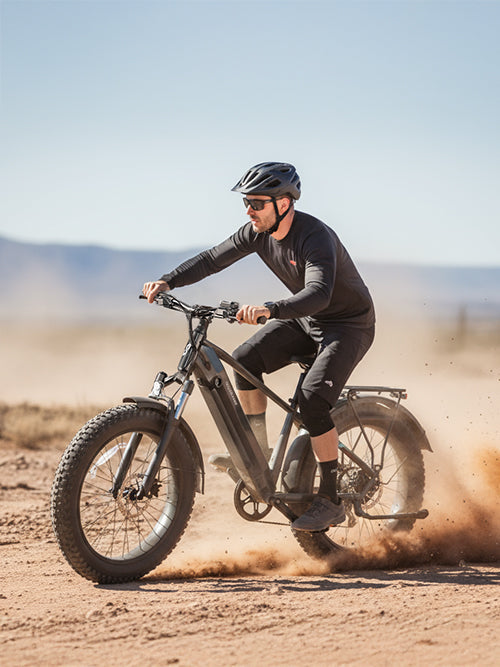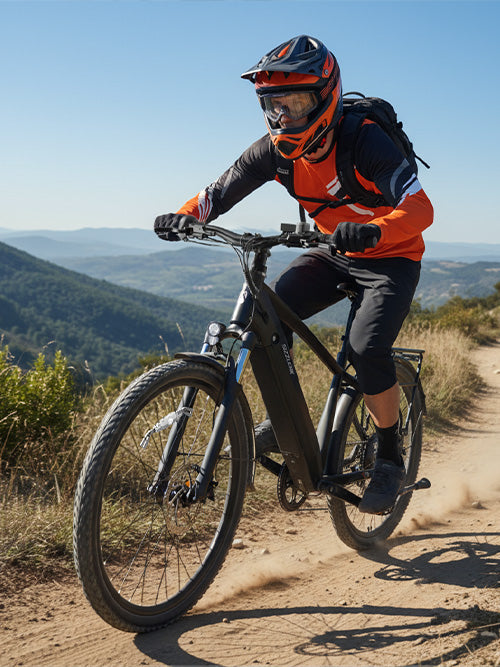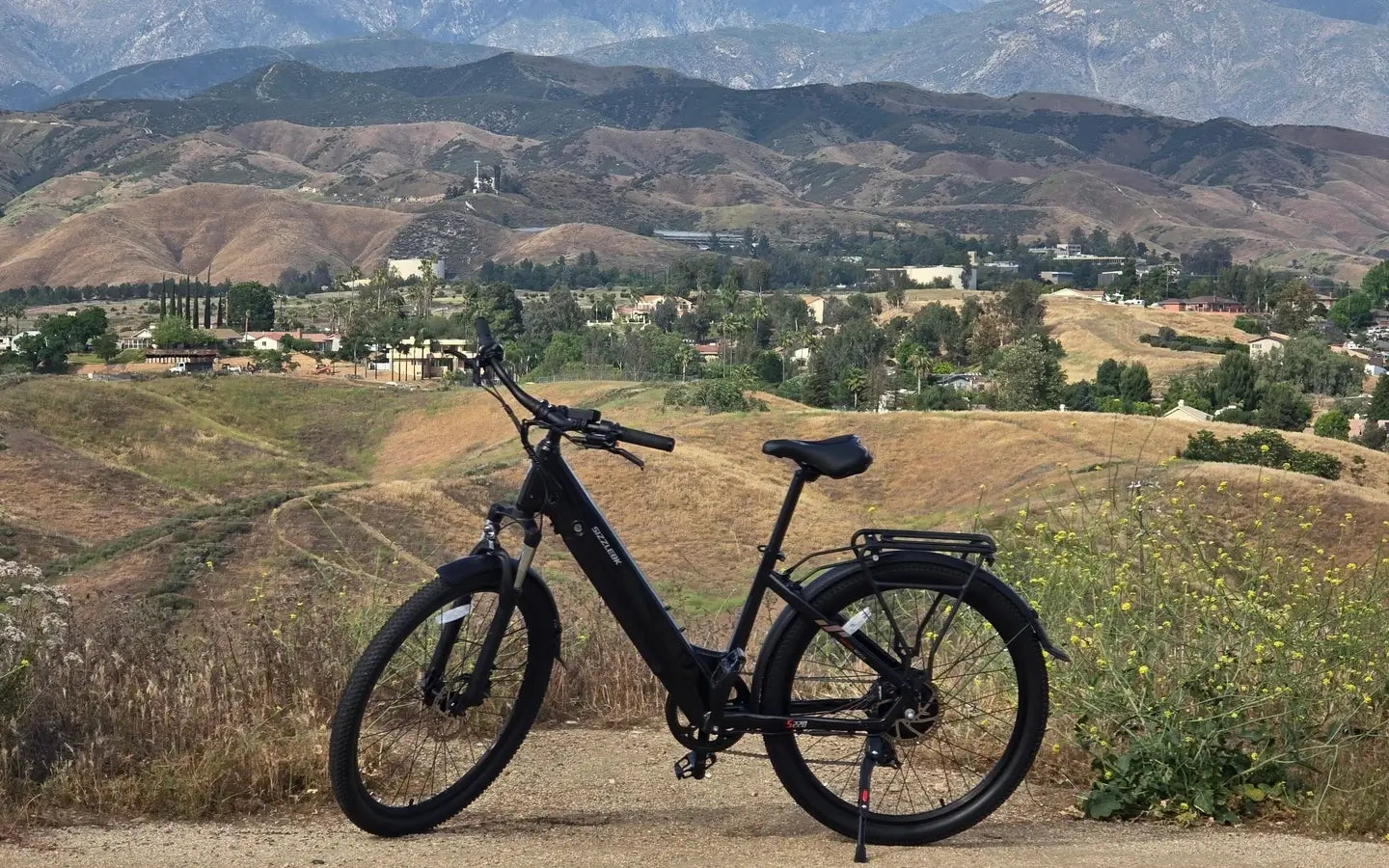The Rise of Passenger Electric Bikes
Passenger electric bikes are bicycles equipped with an electric motor that assists with pedaling. Unlike traditional bicycles, passenger electric bikes come with a battery-powered motor that propels the bike forward, making it easier to navigate hills and cover longer distances without excessive physical effort. The concept of electric bikes has existed for decades, but recent technological advancements have made them more accessible, efficient, and reliable. Modern passenger electric bikes seamlessly integrate traditional cycling features with advanced electronics, catering to a wide range of riders.
Key Features of Passenger Electric Bikes
Powerful Motors
Passenger electric bikes often feature powerful motors capable of assisting the rider up to speeds of 28 miles per hour. These motors are typically brushless hub motors or mid-drive motors, providing smooth and consistent propulsion. They make climbing hills effortless and allow riders to maintain higher speeds on flat terrain with minimal fatigue. Some models even offer multiple power modes, letting riders choose between eco, normal, and sport modes depending on their needs, terrain, and desired battery efficiency. This flexibility is especially useful for commuters who need consistent performance across varying urban and suburban environments.
Long-Lasting Batteries
Electric bikes are equipped with high-capacity lithium-ion batteries that provide a range of 20 to 100 miles per charge, depending on the model, terrain, rider weight, and level of motor assistance. Removable battery designs allow for convenient indoor charging, and some bikes even support fast-charging options that can replenish 50% of the battery in an hour. Advanced battery management systems monitor voltage, temperature, and charging cycles to maximize safety and longevity. Riders can plan trips confidently without worrying about running out of power mid-ride.
Sturdy Frames
The frames of passenger electric bikes are engineered to carry extra weight, whether it's passengers, groceries, or other cargo. Many use reinforced aluminum alloys for a lightweight yet durable construction, while some premium models employ steel or carbon fiber for added strength. Features like extended wheelbases, cargo racks, and suspension forks help distribute weight evenly and maintain stability even on bumpy roads. The combination of a strong frame and a low center of gravity ensures safe handling, even when carrying children or heavy loads.
Comfortable Seats
Passenger electric bikes prioritize rider and passenger comfort. Seats are often wide, padded, and ergonomically shaped to reduce pressure points during longer rides. Many bikes provide adjustable seat heights and backrests for optimal posture. Some models offer suspension seatposts or built-in shock absorbers to minimize vibration and improve ride quality on uneven terrain. For family-friendly models, additional child seats or padded passenger benches enhance comfort and security, making long rides more enjoyable for everyone.
Safety Features
Passenger electric bikes integrate multiple safety features to ensure rider and passenger security. Standard additions include LED headlights and taillights for night visibility, reflective strips on wheels and frames, and integrated turn signals for safer lane changes. Higher-end models may include GPS tracking, smartphone alerts for theft prevention, and electronic braking systems for improved stopping power. Some bikes also feature automatic motor cut-off when brakes are applied or when the bike tips over, reducing the risk of accidents in urban traffic or during high-speed rides.
Technology Integration
Modern passenger electric bikes integrate digital technology to enhance the riding experience. LCD or OLED displays provide real-time feedback on speed, battery life, distance traveled, and motor assistance levels. Some bikes offer smartphone connectivity via Bluetooth, allowing riders to monitor ride statistics, plan routes using GPS navigation, and even adjust motor settings remotely. Advanced models may include regenerative braking, ride analytics, geofencing alerts, and firmware updates to improve performance over time. This technological integration ensures riders have a smart, connected experience tailored to their daily needs.
Versatility & Uses
Passenger electric bikes are versatile transportation solutions for various lifestyles. Cargo bikes allow families to carry children, pets, or groceries safely and efficiently. Tandem electric bikes enable multiple riders to share the cycling experience, ideal for couples or parent-child activities. Electric tricycles offer enhanced stability for elderly riders or those new to cycling. Many models are compatible with accessories like panniers, baskets, rain covers, or trailers. Riders can choose frame sizes, colors, and customization options to match their personal style and functional needs, making these bikes suitable for commuting, leisure, and utility purposes alike.
Benefits & Popularity
Environmental Awareness
Electric bikes provide a green alternative to gas-powered vehicles. They produce zero emissions during operation, reduce noise pollution, and help decrease traffic congestion. By replacing short car trips with e-bike rides, urban areas can see tangible reductions in carbon footprint. Many cities are promoting e-bike programs to encourage sustainable transportation, improve public health, and support eco-conscious lifestyles.
Economic Benefits
Owning an electric bike is cost-effective compared to maintaining a car. They do not require gasoline, have fewer moving parts to maintain, and often incur lower repair costs. Insurance is typically cheaper, and some regions offer tax credits or rebates for electric bike purchases. For commuters, e-bikes eliminate the need for parking fees or public transit costs, resulting in significant long-term savings.
Health and Lifestyle
While electric bikes provide motorized assistance, riders still engage their muscles while pedaling, promoting cardiovascular fitness, stamina, and lower-body strength. Riders can select assistance levels to match their fitness goals, making e-biking accessible to beginners and experienced cyclists alike. Regular use encourages a more active lifestyle while reducing physical strain, especially for older adults or those with joint issues.
Convenience
Electric bikes are easy to maneuver through congested streets, narrow alleys, or crowded bike lanes. Their compact size and ability to use bike lanes reduce commute times, while lightweight frames and folding options make storage easier at home or work. They also simplify errands like grocery shopping or school pickups, offering a practical alternative to cars for short trips.
Social Acceptance
Modern e-bikes have gained social recognition due to stylish designs, celebrity endorsements, and urban cycling initiatives. Communities increasingly accept e-bikes as legitimate transportation, integrating them into bike-sharing programs, commuter routes, and local events. This growing social acceptance makes riding an e-bike both practical and trendy.
Passenger Electric Bikes vs Traditional Bikes
Speed and Distance
Electric bikes allow riders to travel longer distances and at higher speeds without excessive exertion. While a traditional bicycle relies entirely on human power, e-bikes provide pedal-assist or full throttle modes. This is especially useful for commuting, tackling hilly routes, or carrying passengers and cargo over extended distances. Riders can maintain consistent speeds and reduce fatigue compared to traditional cycling.
Effort and Comfort
The motor assistance reduces strain on muscles, joints, and cardiovascular systems, making rides more comfortable and less exhausting. On steep inclines, riders can engage motor support to maintain momentum, while traditional bikes may require intense effort. The comfort factor encourages daily use, even for longer commutes or recreational trips, making cycling accessible to a wider demographic.
Cost Considerations
Although e-bikes typically have a higher upfront cost, the total cost of ownership can be lower over time. Savings come from avoiding fuel expenses, parking fees, public transportation, and frequent repairs associated with cars. For families or frequent riders, this cost-effectiveness makes passenger electric bikes a smart investment.
Environmental Impact
Both traditional and electric bikes are environmentally friendly, but e-bikes can replace more car trips due to the ease of travel over longer distances or challenging terrain. This amplifies their positive impact on air quality, noise reduction, and sustainable urban mobility. E-bikes encourage a shift from fossil fuels to clean, renewable energy sources.
Versatility
Electric bikes are more versatile for carrying passengers, cargo, or both. They can integrate racks, trailers, and child seats, which may be impractical on traditional bikes without significant modifications. This versatility makes them suitable for diverse tasks such as family transportation, grocery runs, and recreational rides.
Buying Guide: How to Choose the Right Passenger Electric Bike
When selecting a passenger electric bike, consider factors such as battery range, motor power, frame strength, comfort, and accessories. For families and commuters looking for reliable options, the S320 Long-Range Family Electric Cargo Bike offers extended battery range, robust build, and passenger-friendly features.
Battery Range
Battery range determines how far you can travel on a single charge. For daily commuting or errands, a minimum of 20–30 miles may suffice, while long-distance riders should consider 50–100 miles. Higher-capacity batteries also provide consistent power on hilly terrain or when carrying heavy loads. Removable and swappable batteries enhance convenience, especially for multi-day trips.
Motor Power
The motor influences acceleration, hill-climbing ability, and overall ride feel. Motors range from 250W for light assistance to 750W or more for demanding terrain. Mid-drive motors often provide better balance and torque for heavy cargo, while hub motors are simple, durable, and quiet. Consider terrain, passenger load, and intended use when evaluating motor power.
Frame and Build Quality
Durable frames ensure safety and longevity. Aluminum frames are lightweight and resist corrosion, while steel frames provide added strength for heavy cargo and rough roads. Inspect welds, joints, and overall geometry for stability. Reinforced frames with extended wheelbases enhance balance and comfort, especially when carrying multiple passengers.
Comfort and Design
Ergonomics play a vital role in ride experience. Adjustable seats and handlebars allow riders of different heights to maintain proper posture. Suspension systems, padded seats, and shock-absorbing tires reduce vibration and improve ride smoothness. For family models, child-friendly features such as secure harnesses, passenger benches, and footrests enhance safety and comfort.
Budget and Warranty
Determine a realistic budget, accounting for battery upgrades, accessories, and potential maintenance. Evaluate warranty coverage for motor, battery, and frame. Reliable warranties indicate brand confidence and provide peace of mind for long-term ownership. Some retailers also offer service plans or roadside assistance for additional support.
Brand Reputation
Research brands for reliability, customer support, and user reviews. Well-known brands typically offer better-quality components, consistent performance, and easier access to replacement parts. Reading customer experiences helps gauge long-term satisfaction, durability, and maintenance requirements.
The Future of Passenger Electric Bikes
The future of passenger electric bikes looks promising, with continued advancements in battery technology, motor efficiency, and smart connectivity. Cities are increasingly designing bike-friendly infrastructure, creating safer and more accessible routes for e-bike commuters. Innovations such as integrated GPS tracking, automatic gear shifting, solar-charging panels, and AI-powered ride assistance are on the horizon. As environmental concerns grow, passenger electric bikes will become a staple in urban transportation, offering sustainable, practical, and enjoyable mobility options for families, commuters, and recreational riders alike.
Conclusion
Passenger electric bikes combine the best of cycling and modern technology to provide efficient, comfortable, and eco-friendly transportation. With powerful motors, long-lasting batteries, versatile designs, and advanced safety features, they cater to a wide range of users. Whether for commuting, family outings, or recreational rides, passenger electric bikes offer a practical solution for modern mobility while promoting sustainability and an active lifestyle.
FAQs
1. How far can a passenger electric bike travel on a single charge?
Depending on battery capacity, terrain, rider weight, and motor assistance level, ranges typically vary from 20 to 100 miles per charge.
2. Can I carry children on a passenger electric bike?
Yes, many models are designed for family use, equipped with child seats, benches, and safety harnesses for secure transportation.
3. Are electric bikes difficult to maintain?
Maintenance is generally simple, involving occasional tire inflation, brake checks, battery charging, and motor inspection. Compared to cars, maintenance costs are significantly lower.
4. Do electric bikes require a license or registration?
Regulations vary by region. Most pedal-assist e-bikes under 750W do not require a license, while throttle-only or high-powered models may have legal requirements.
5. How do I choose the right passenger electric bike?
Consider factors like battery range, motor power, frame durability, comfort, passenger needs, and brand reputation. Test rides and reviews can help make an informed decision.
